Why iObeya
大 部 屋

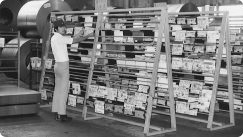
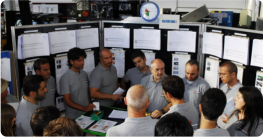
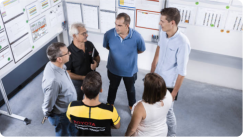
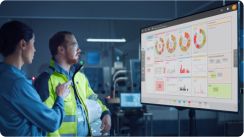

Obeya (Oobeya), or ” Big Room” in Japanese, is a workspace where teams gather to collaborate and coordinate. The walls of Obeyas are traditionally covered with paper boards, notes, sticky notes, and other materialization of the collective intelligence that emerges in this place. Therefore, the Obeya is a space of collaboration and organization that centralizes all the information necessary to the realization of a project.
Introduced by Toyota in the 90’s, this methodology is the origin of the Lean Product Development and Lean Manufacturing practices that are now widely used by industrial sectors. The Agile community also drew inspiration from these principles.
Initially physical with boards, post-its and other paper elements, the Obeyas entered the digital world with iObeya to serve distributed and hybrid teams.
by Carol McEwan,
Agile Program Director at iObeya
The effectiveness of Obeyas as a production management method was unveiled in the 90s when Toyota took on the challenge of building the first hybrid car prototype for the 21st century: the Prius. This model was tremendously successful due to its technological lead and became the first industrially assembled hybrid car.
This performance was possible thanks to the internal use of the “Toyota Lean Product Development System”. This Obeya-based system has allowed teams to organize and supervise the development of this new car model in a very structured way.
Thanks to this system, Toyota, and its chief engineer Takeshi Uchiyamada, succeeded in designing and delivering to the market the first hybrid vehicle in less than 3 years, and 15 years ahead of the competition!
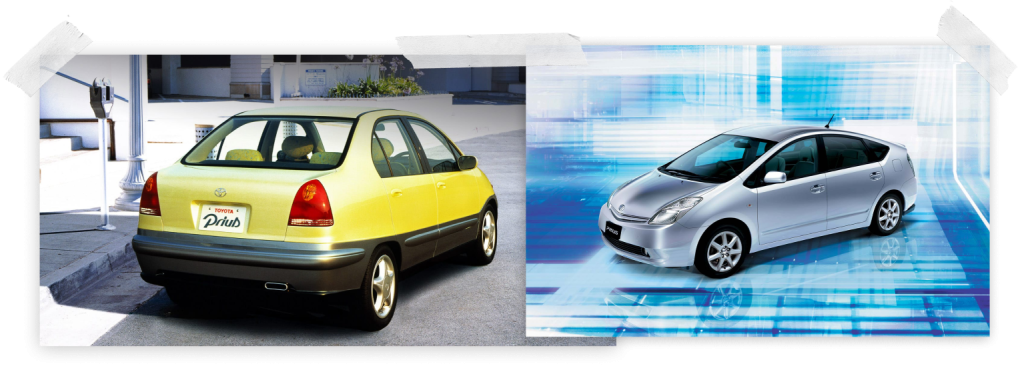
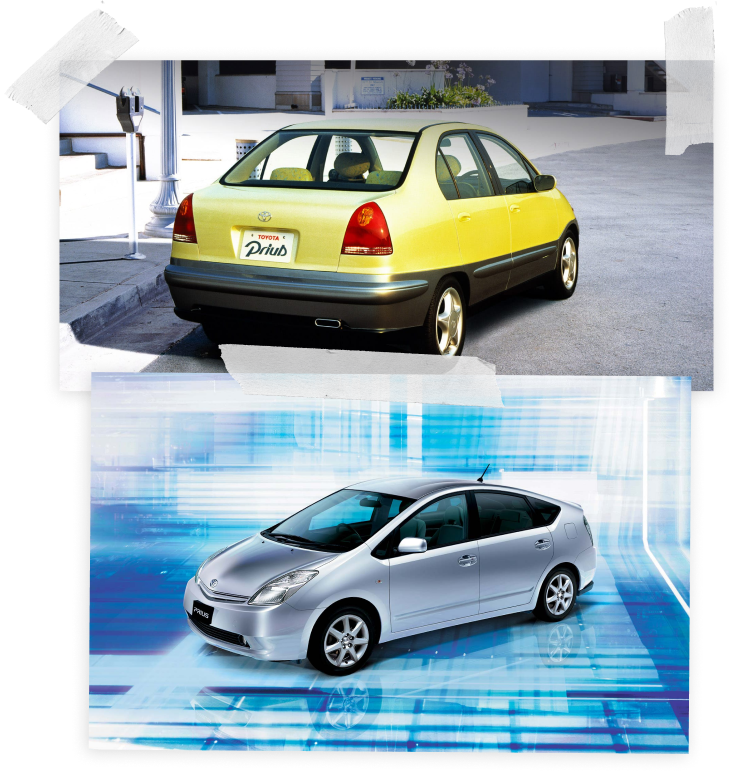
Following the Prius’ success, the Lean Product Development method quickly spread to other industrial groups, persuaded by Toyota’s outstanding productivity.
iObeya’s creation is intrinsically linked to Obeyas. In 2012, after several years of experience with physical Obeyas, the Stellantis group (formerly PSA) expressed to KAP IT (ex-iObeya) the need to digitize its “large rooms” for product development: iObeya was born. The need to synchronize distributed teams at Stellantis was such that the paper format was no longer viable. PSA was soon followed by Sanofi and Airbus, who embraced the concept of virtual Obeyas. The idea became widespread in the business world. Today, iObeya equips most of the major industrial groups.
Recently, the Covid 19 crisis and lockdowns have boosted this trend, demonstrating the advantages of online collaborative projects on common visual supports.
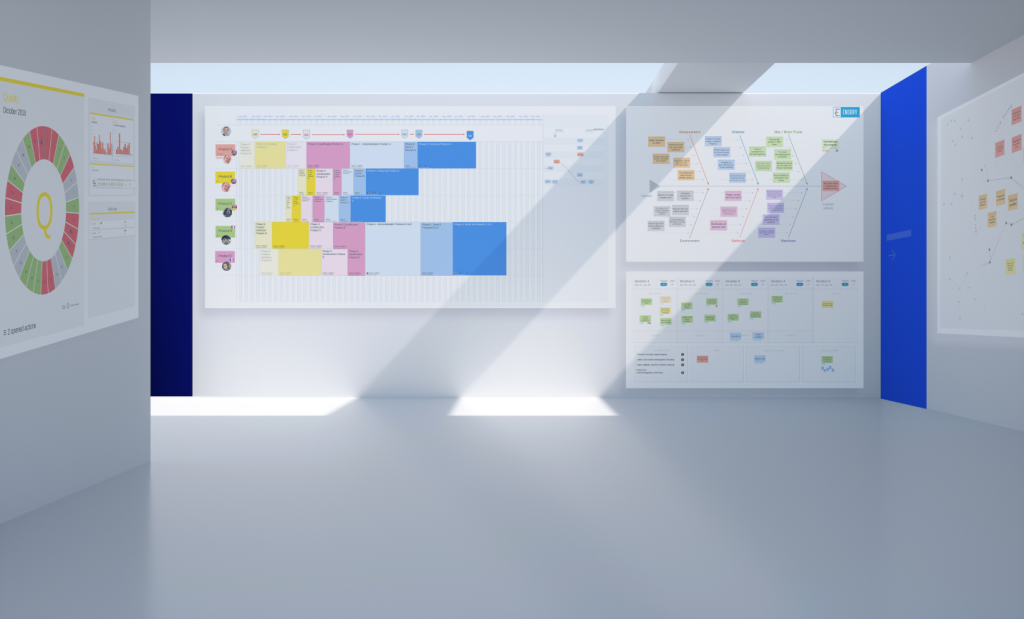
Obeyas are more than just a “big room”, they are a philosophy, a process, a way of getting teams to work together to increase collaboration and efficiency within an organization.
Obeyas are places where teams come together to align the whole organization and increase their productivity from strategy to execution.The boards displayed in Obeya rooms are usually composed of whiteboards with sticky notes and graphics.
An Obeya is like a control room where teams discuss and brainstorm around projects, share and monitor KPIs, escalate issues and track project progress.
In the 90s, this high performing work method was brought to light with the launch of the Prius and Takeshi Uchiyamada, Toyota’s Chief Engineer. Uchiyamada understood that success depended on an organization’s ability to integrate everyone’s efforts at the same time.
For this reason, the notion of collective intelligence is central to the Lean philosophy, from which the Agile method takes its roots. When teams share goals and visions and align in terms of achievement, they are able to identify, solve, and escalate problems.
It is within the Obeyas that the teams practice Visual Management in a very clear and structured framework: sprints, stand-up meetings, planning boards, etc.
Obeyas were born in Toyota factories. Since then, Obeyas have been used in all types of industries including pharmaceutical, aeronautics, automotive, and more.
To monitor production quality, Lean teams have at their disposal different boards that are displayed in their Obeyas:
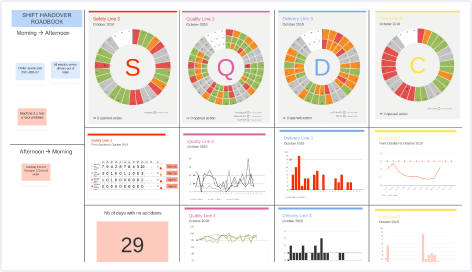
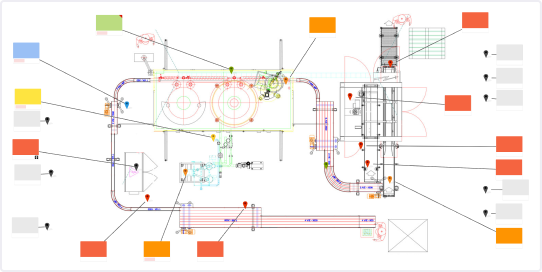
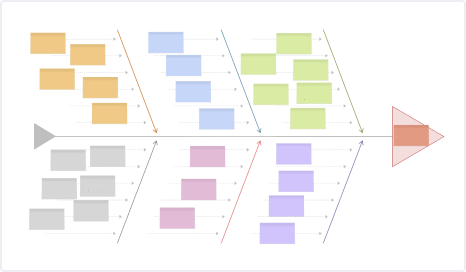
Regarding Lean project management, Obeyas allow synchronization among the project team as well as with the different stakeholders linked to the project.
The Obeyas cover a wide spectrum, from a simple continuous improvement project to the development of a product within an innovation division.
To do this, the teams have the following tools at their disposal:
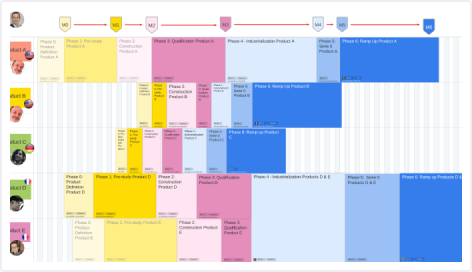
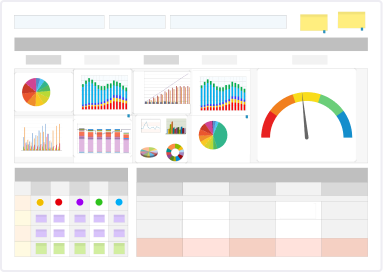
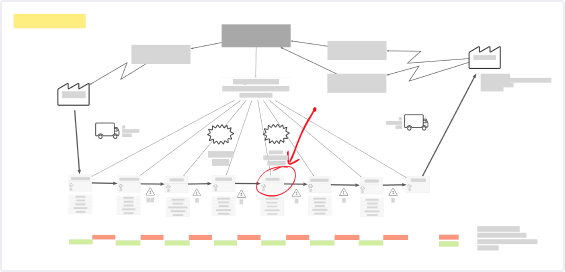
Agile teams have a culture of collaborating using an “Agile wall” or ScrumBoard often containing team Kanbans with a Burn Down Chart and sometimes even a Lean Canvas and Personas. These “Agile walls” are completed with sticky notes helping developers or team members to quickly find information. For a long time, agilists had to document all the tasks performed in ALM tools (ADO, JIRA), which were often unadapted to the Agile methods used. These information radiators generally only concerned one team with few dependencies with the other teams.
In fact, PI Planning – an event for synchronizing and aligning Agile teams in the SAFe© framework – was also called “Big Room Planning”. This name reflects the first step of the Agile world into a more conventional Obeya. The central elements gathered during the 2 days of PI Planning are thus kept in a common place serving as a synchronization network for the associated teams: an Agile Obeya.
With the emergence of more complex Agile programs coupled with the need to scale Agile, teams had to go even further into Visual Management. It was at this point that Obeyas began to inspire Agilists. But there was still a major flaw in this “Agile Obeya“: the difficulty and constraints of moving paper based sticky notes This network of decision and synchronization tends to disappear in part after the 2 days of PI planning. The digitization of these Agile Obeyas becomes necessary to retain the information. With these Agile Obeyas, agile teams can follow both trains and sprints defined in the PI planning. In addition to PI plannings, SAFe® boards are developed to go even further in the virtualization of Agile walls.
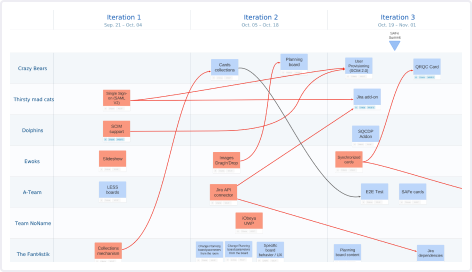
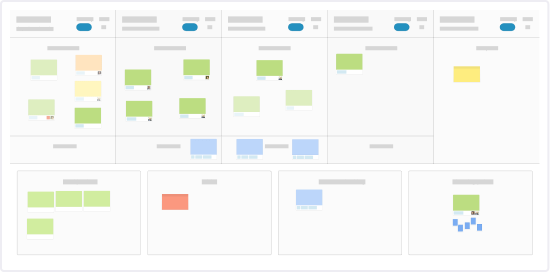
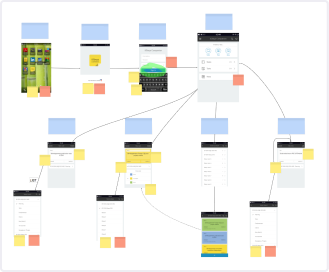
After decades of physical Obeyas, the future of Obeyas will be digitized.
The virtualization of Obeyas raises legitimate questions:
Our customers are the ones who best answer these questions through their testimonials. The tools’ choices used to digitize the Obeyas are in fact crucial: does it adapt to the existing internal rituals? Does it provide the framework in which teams collaborate in “real life”? With iObeya, teams digitally reproduce all their rituals in “real life”. This digital tool is natural, interactive and integrates perfectly with existing workflows.
Within the first year of deploying iObeya, Schneider Electric experienced a significant improvement in time-to-market delivery, with a 70% improvement in delivering projects on time
Sylvain Schär
Head of Engineering development at Schneider Electric
Obeyas have been, and still are, used in their paper version. But many organizations are choosing to digitize their Obeyas to remain competitive and to face new ways of working: distributed teams, hybrid work, time zones, and more. Visual Management follows the Obeyas trend to offer a new mode of virtual collaboration.
Today, it makes sense to digitize Visual Management to increase its adoption and deploy it even more widely. The post-covid hybrid world needs it.